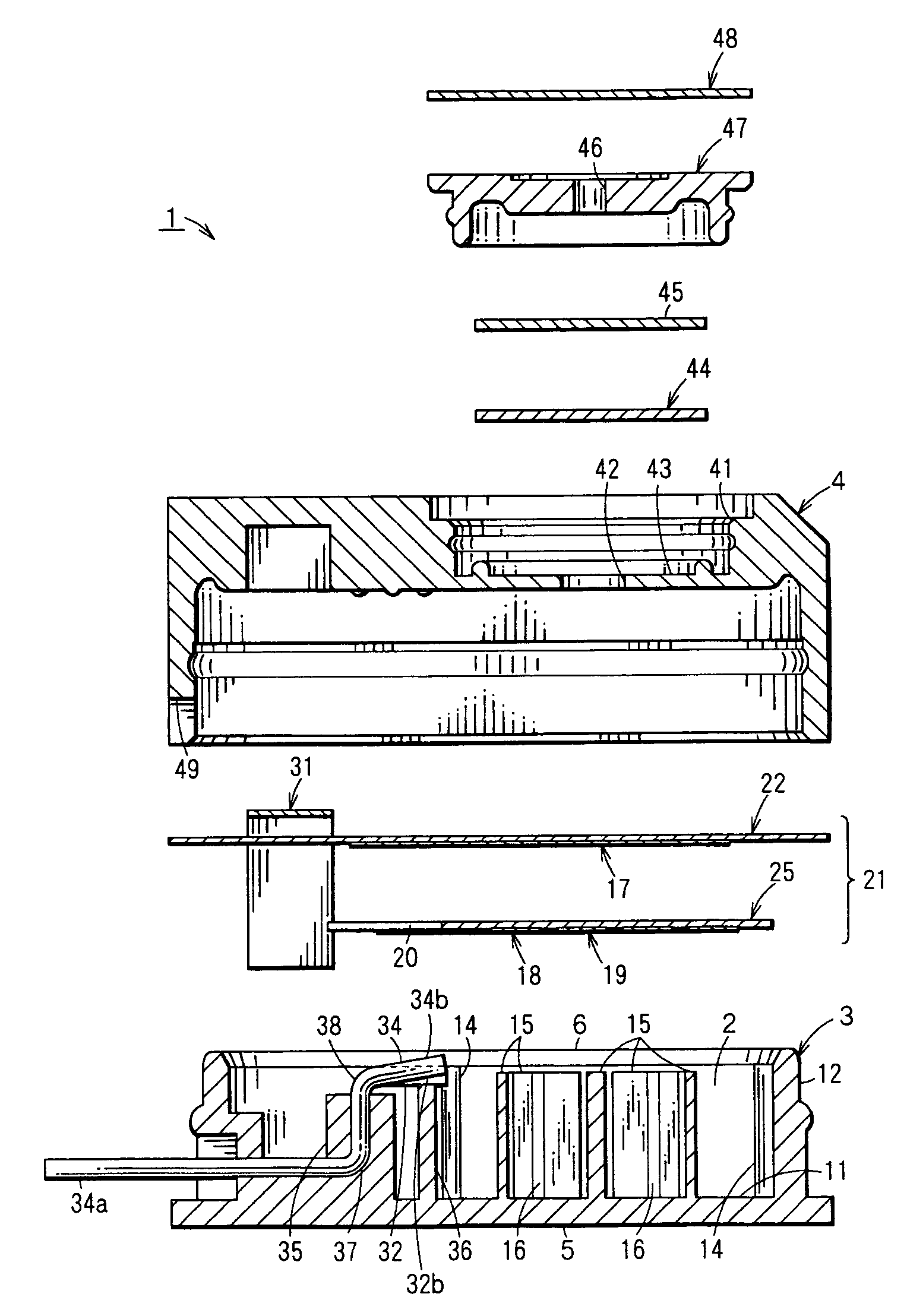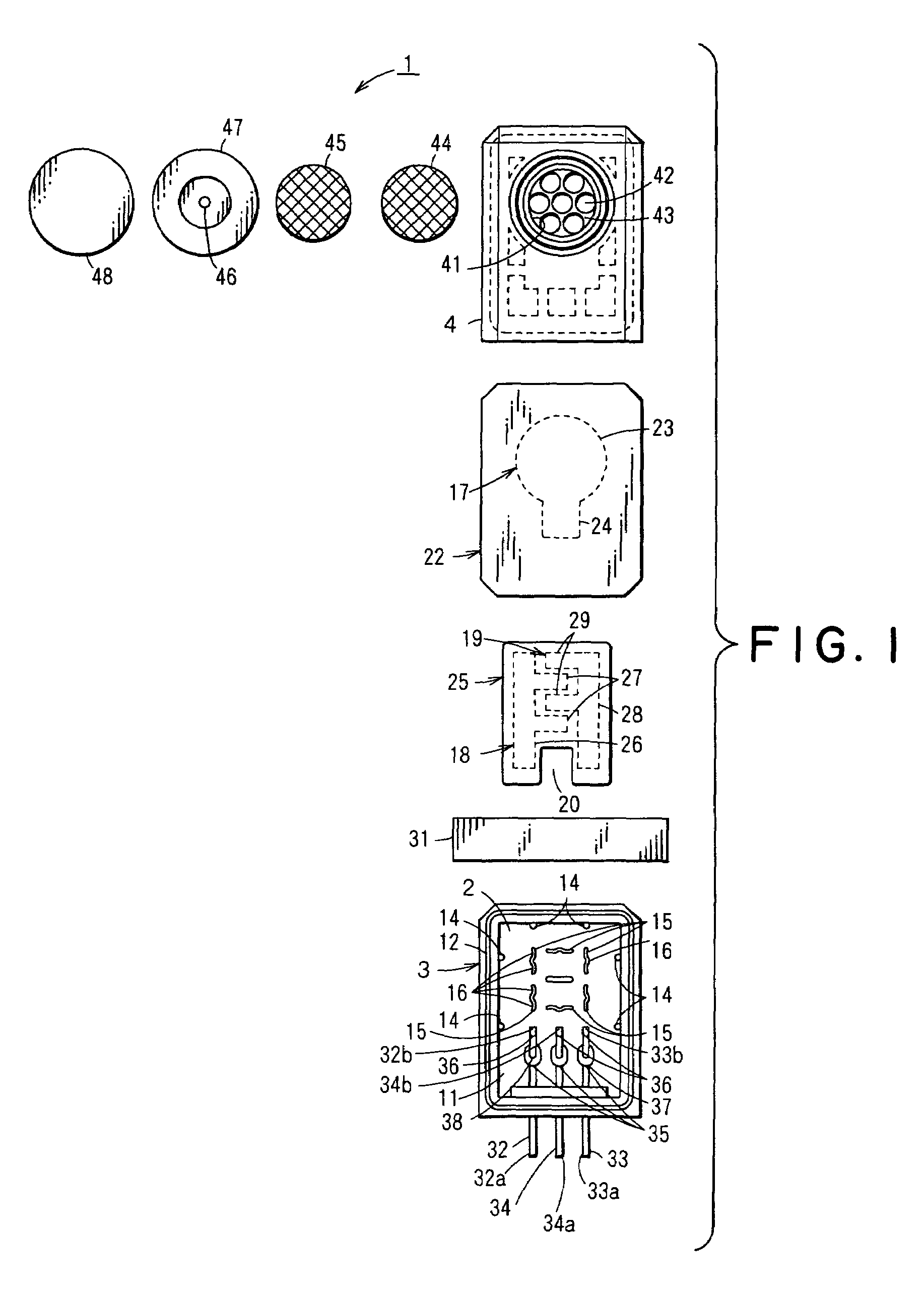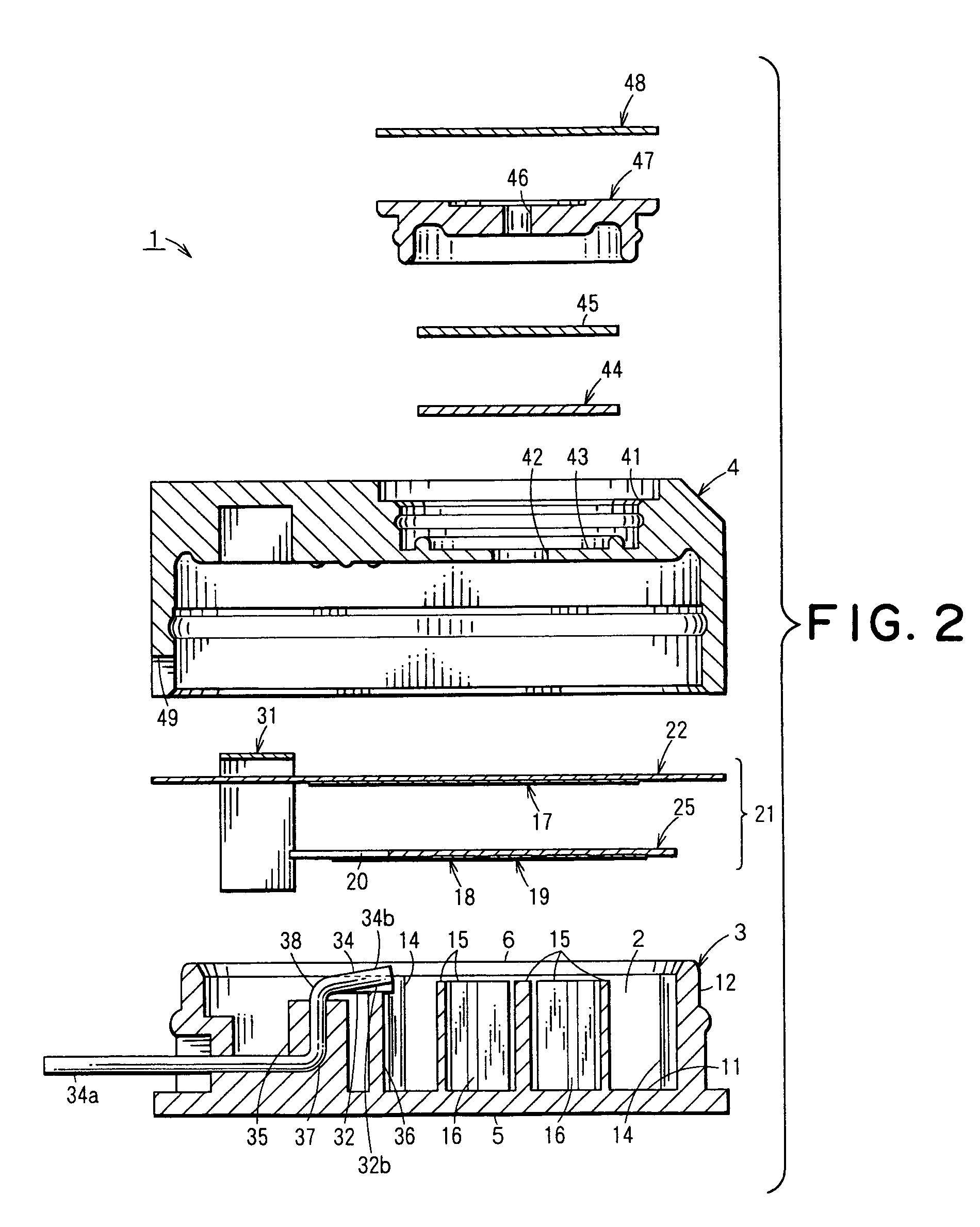Electrochemical sensor
- Summary
- Abstract
- Description
- Claims
- Application Information
AI Technical Summary
Benefits of technology
Problems solved by technology
Method used
Image
Examples
working example
[0110]In order to determine the material for the electrode pins 32,33,34, a test was performed to evaluate the ability of each material to resist the sulfuric acid to be used in the electrolytic solution 13.
[0111]SUS303A, SUS316L, SUS321, Nickel (Ni), Monel (product name of Daido-Special Metals Ltd.) (alloy of Ni—Co—Cu), Hastelloy C-276 (product name of Haynes Stellite Co.) (alloy of Ni—Mo—Cr), titanium (Ti), tantalum (Ta), gold plate (base metal: phosphor bronze), gold (Au), palladium (Pd), and platinum (Pt) were chosen as metals to be tested as possible metals for the electrode pins 32,33,34.
[0112]The samples consisting of the metals described above were separately and individually immersed in 40% sulfuric acid solution at 50° C. to observe changes in the test metals. Results of the test are shown in Table 1.
[0113]
TABLE 1Test Conditions: immerse in 40% sulfuricSulfuric Acidacid solution at 50° C.Resistance TestTest periodTest metals2 days7 days30 days60 daysConclusionSUS303AΔXXXun...
PUM
 Login to View More
Login to View More Abstract
Description
Claims
Application Information
 Login to View More
Login to View More - R&D
- Intellectual Property
- Life Sciences
- Materials
- Tech Scout
- Unparalleled Data Quality
- Higher Quality Content
- 60% Fewer Hallucinations
Browse by: Latest US Patents, China's latest patents, Technical Efficacy Thesaurus, Application Domain, Technology Topic, Popular Technical Reports.
© 2025 PatSnap. All rights reserved.Legal|Privacy policy|Modern Slavery Act Transparency Statement|Sitemap|About US| Contact US: help@patsnap.com



